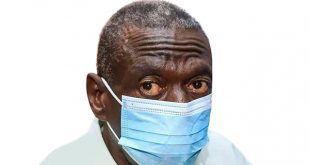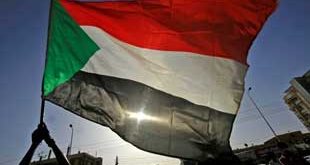
By Ronald Musoke
The UN’s World Food Programme recently launched its five year country programme for Uganda focusing on disaster relief and improving the lives of smallholder farmers. Michael Dunford, the WFP country director for Uganda explained it to The Independent’s Ronald Musoke
What is the main focus of WFP’s new five year country programme?
The relief programme—a short term intervention— is focusing on the transition from humanitarian assistance to development for refugees and the Karamoja sub-region. The Karamoja intervention will run for three years. Karamoja is different from the rest of the country because it only receives one rainfall in a good year and is dependent on those rains coming at the right time. We have seen fluctuations in rainfall and are concerned that there is a chronic food security problem in the sub-region. The harvest in Karamoja is particularly bad this year. WFP has therefore increased its safety net programmes to target the most vulnerable people in 31 of the most vulnerable sub-counties in Karamoja and we are supporting about 109,000 beneficiaries. We also have a school feeding programme and a food for assets programme which looks at building the resilience of the communities and the households.
In your opinion, what will it take for Karamoja to decisively end its chronic hunger problem?
There is no quick fix. But I see improvement. We have peace and security in Karamoja that allows us a development dividend that didn’t exist previously. Karamoja is also only a million people, a small population, and so all stakeholders should be able to coordinate. But we also need to recognize that Karamoja is very diverse and we need the right interventions depending on geography, topography, and context. There are ways of strengthening the systems. We need to invest in social services, safety net programmes, and improve livelihoods through agriculture.

How are you copying with feeding the big number of refugees Uganda is hosting?
We have got a record number (over 500,000) and, of these, WFP is feeding 370,000 which is another record. They are predominantly from South Sudan, the Democratic Republic of Congo but we are now getting an influx from Burundi. We have seen a spike in the first month of 2016 and we know that the food security and the regular security situation is deteriorating in South Sudan, so we are fearful that we may see a further increase in numbers. We try to meet their basic food security requirements through general food distribution. We also try to diversify and increase the number of refugees who are receiving cash instead of food. We shall introduce a biometric system so that we can be sure that only those who are entitled to rations are receiving them. We are also introducing opportunities for refugees benefitting from the government’s programme of settlement to use that land to generate livelihoods and become self-reliant.
What is the idea behind giving cash instead of food rations to some refugees?
The idea is to empower the refugees to make choices for themselves, to diversify their food basket. We are also eager to see to what extent a cash distribution may have on both refugees and host communities. At the moment we are giving cash to almost 40,000 refugees the equivalent of what they would have received in in-kind contribution.
Besides feeding refugees, why has it remained important for WFP to keep its operations in the country in spite of Uganda significantly reducing hunger and poverty levels over the last 20 years?
Uganda’s poverty figures have been halved over the last 15 years. But how do we continue to bring the poverty numbers further down? There is also the issue of food security and nutrition. Karamoja aside, Uganda typically has two harvests and there is an availability of food. But are people able to access the right types of food? We still see very high levels of under nutrition throughout the country. In some of the most productive areas, we see unacceptably high levels of stunting among children. According to “The Cost of Hunger,” a 2013 study detailing the real cost of Uganda’s underinvestment in nutrition, it is estimated that 5.6% of GDP is lost because of under nutrition. So we have been working with the Office of the Prime Minister alongside other stakeholder to see how we as WFP can make a positive impact on addressing the under nutrition.
What else is WFP focusing on in the new programme?
We are excited about the work we are doing with smallholder farmers in Busoga, Teso, Acholi and Kasese; trying to increase their access to markets which in turn will increase their incomes. We are addressing post-harvest losses. It is estimated that up to 30% of everything that is harvested in Uganda is lost before it gets to the market because of poor storage, infestation, or contamination. About two years ago, WFP launched a programme—a combination of improved and enhanced training together with a distribution of climatic storage units (500-1300kg airtight storage units) to control pests and aflatoxins. We have had meetings with NAADS where we identified new areas in the country where perhaps WFP and NAADS can join hands and work in unison. We also signed a memorandum of understanding with ‘Operation Wealth Creation’ in October, 2015 in an effort to support the presidential initiative on wealth creation focusing on agriculture because that sector represents about 70% of the population. We want to see how WFP’s experience, expertise and technology can support the broader ambitions of the presidential initiative.
Talking about agriculture and market support, how has WFP fared with its Purchase for Progress initiative?
WFP increasingly looks at its consumer demand. This is why WFP bought $20 million worth of commodities (maize, beans and other pulses) in Uganda last year. We need to further invest in agriculture. We are working with suppliers of inputs, traders and other private sector entities. We build community level warehouses and train the farmer organisations on post-harvest handling and marketing. We invested in the management committees of those farmer organisations which are now nationwide. We have warehouses ranging from 100—300 metric tonne capacity where farmers can come together as groups and bulk their commodities and market them to traders. The farmers double their incomes by two or three times because, rather than sell their commodities in the first month for fear that they are going to lose 30%, they are now able to hold on until the price increases.
In which other ways are WFP’s programmes aligned to support the priorities and policies of the government?
WFP’s engagement is widespread but our main counterpart is the Office of the Prime Minister (OPM) on refugee-related matters and disaster preparedness response. WFP is looking at how it can support the development of a humanitarian supply chain and the Uganda Nutrition Action Plan. We are supporting government in school feeding in Karamoja together with other stakeholders. A good school feeding programme should be used to stimulate agriculture, markets, to address nutritional requirements. Multiple ministries (trade, health, and agriculture) can participate in the national school feeding programme. WFP is also working with the National Planning Authority (NPA) looking at Sustainable Development Goals (SDGs); particularly SDG2 (ending hunger, achieving food security, improving nutrition and promotion of sustainable agriculture). WFP is also working on an early warning system particularly focusing on Karamoja. WFP shall also soon commission a study looking at the viability of a national grain reserve. We also do a lot of work with the Uganda Bureau of Statistics (UBOS) in data collection and analysis. We also work with customs and the ministry of trade on the development of the warehouse receipt system. This show that the scope with which WFP can engage with the government is quite broad.
Looking at the Karamoja sub-region and its high drop-out rates, how important would the school feeding programme help keep children in school?
Many parents in Karamoja have never been to school themselves so they don’t necessarily understand the benefit of an education the same way we do. So the school feeding programme is to increase enrollment, attendance, and reducing dropout rates, especially for girls and young women so that there is no preference at the household level as to whether or not they send boys or girls to school. What I am excited about is the potential of handing this programme over to the government. WFP has experience from the neighbouring countries and beyond of using this programme to stimulate government ownership and ensuring that multiple objectives can be achieved through this activity.
What are some of the challenges WFP is facing in its attempt to implement its programmes?
WFP is a voluntary funded organization and yet there is a misconception that we come with money. That is not necessarily true. We have to fundraise annually our entire budget. The country programme this year is between $90-100 million and we have had to raise this money from our traditional donors—the Americans, the British, the Japanese, and the Canadians. For refugees alone, we need $5.3 million per month. The other challenge has to do with coordination to be more effective and efficient. I know for instance that Operation Wealth Creation is looking very closely at all the various stakeholders engaged in agriculture and trying to help coordinate all the activities and interventions, streamline them to make them more effective. That is one of the areas that WFP is very eager to support.
With the Great Lakes region being an ever-present hotbed of political conflict, how do you cope with some of the logistical challenges when it comes to feeding refugees?
WFP is known around the world for its strength in logistics capacity. In Uganda we have a big fleet of trucks and warehouses to support our operations in the country and in neighbouring countries. We have 95,000MT storage capacity in Uganda. This benefits Uganda because we rent warehouses around Uganda. We spend between $8-10 million on transport and warehousing with local suppliers. In 2015, WFP spent about $20 million buying 55,000MT of commodities. WFP not only spends money but also re-invests it into the economy.
Where do you see WFP concentrating its effort in the near future?
WFP will always be available to support the government wherever its efforts are best required; particularly where the humanitarian needs exceed the capacity of the government to respond. With regards to refugees and Karamoja, WFP will always provide that safety net.
 The Independent Uganda: You get the Truth we Pay the Price
The Independent Uganda: You get the Truth we Pay the Price


